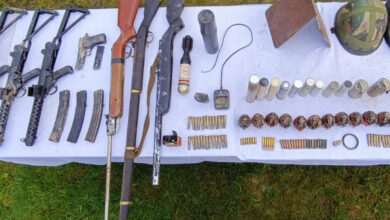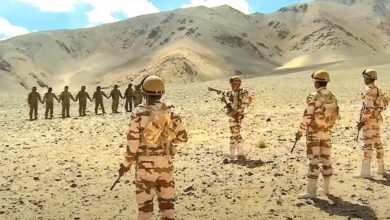India’s Army Considering The Light Tank Zorawar To Counter China Along LAC

- The Indian Army will have an advantage in addressing future security concerns thanks to the introduction of swarm drones into the mechanised forces and the proper embrace of niche and disruptive technology
- The use of swarm drones in recent conflicts around the world, particularly in Armenia, Azerbaijan, and Syria, as well as in attacks on Saudi Arabian oil fields and the ongoing crisis in Ukraine
The Indian Army is prioritising the purchase of the indigenous Indian light tank, aptly named “Zorawar,” for deployment in the mountains, in addition to introducing niche technologies like loitering munitions, anti-drone capabilities, and next generation Intelligence, Surveillance, and Reconnaissance (ISR) capabilites.
This is due to the experience of deploying armour at an altitude of 15,000 ft. to outmanoeuvre the movement of Chinese forces during the stand-off in These are a component of the mechanised infantry and armoured corps’ comprehensive modernization effort.
It will have a similar firepower to the current tank, including the ability to shoot missiles. It will be incredibly agile because of the power to weight ratio, according to people in the security industry. “The project is progressing incredibly well. Next month is anticipated for the Defence Acquisition Council’s Acceptance of Necessity (AoN), according to a source.
The armour equipment profile is one of the most important variables in determining the operational capacity of land forces, a source said, stressing that China has introduced a significant number of cutting-edge medium and light tanks. This is demonstrated by recent experiences along the northern borders. According to the source, “this increasing threat on the northern frontiers is likely to remain a problem in the near future.”
The existing T-72, T-90, and indigenous Arjun tank fleet’s firepower is being improved. One source stated, “We are moving toward munitions with greater depth of penetration,” adding that the Defence Research and Development Organisation (DRDO) has just recently shown this in its user trials and that the Army user trials are about to follow.
Following the clash on the Kailash range on the south bank of Pangong Tso in August 2020, India and China had stationed tanks on the mountain peaks during the height of the protracted standoff in eastern Ladakh. The tanks were later withdrew as part of the disengagement from both banks of the lake.
Varying terrain
Zorawar is built to function across a variety of settings, including island territories, high altitude regions, and marginal terrain. According to officials, it would have specialised technology like Artificial Intelligence (AI), drone integration, active defence systems, and a high level of situational awareness. It will also be extremely transportable for quick deployment to meet any operational circumstance.
The large tank fleet, which included T-72 and T-90 tanks, was useful in gaining tactical surprise over the enemy, but officials noted that the heavy tanks were primarily made for operations in plains and desert terrains and have certain limitations when deployed in the Rann of Kutch or at high altitudes.
In order to get around these restrictions, it is operationally necessary to buy a lighter tank that was designed and developed locally, the person said. “The Russia-Ukraine war’s adverse effects on the global supply chain in defence component supplies have hampered both the manufacturing and maintenance of the foreign fleet of tanks that India is now holding,” the source said.
According to the “Make in India” initiative, the project, which has already gained in-principle approval, is scheduled to be purchased under the “Make-I” acquisition category of the Defence Acquisition Procedure (DAP)-2020.
The latest ZTL-11 wheeled armoured personnel carriers, the CSK series of assault vehicles, and the third generation modern light tank, the ZTQ 15 (Type 15), have all been deployed by China along the LAC in eastern Ladakh over the past two years, as The Hindu previously reported.
Swarm drones
According to insiders, the Indian Army has purchased swarm drones from two Indian startups. The Autonomous Surveillance and Armed Drone Swarm (A-SADS), a Make-II case that contains a number of enhancements including a version for high altitude zones, has also been started, according to one source. Under emergency procurement, the Army signed multiple contracts with Indian companies in 2021 for a variety of tactical drones, and delivery have already started.
The Indian Army will have an advantage in addressing future security concerns thanks to the introduction of swarm drones into the mechanised forces and the proper embrace of niche and disruptive technology, the Army tweeted on Friday.
A swarm drone system consists of a number of tiny drones that are AI-capable, talk to the control station and to each other, and offer asymmetric capabilities for eliminating the enemy’s frontline assets.
The use of swarm drones in recent conflicts around the world, particularly in Armenia, Azerbaijan, and Syria, as well as in attacks on Saudi Arabian oil fields and the ongoing crisis in Ukraine, according to sources, has underlined their effectiveness in modern warfare. The source continued, “Even in our setting, recent border events have witnessed a substantial increase in drone-related incidents along our borders.







Facebook Comments